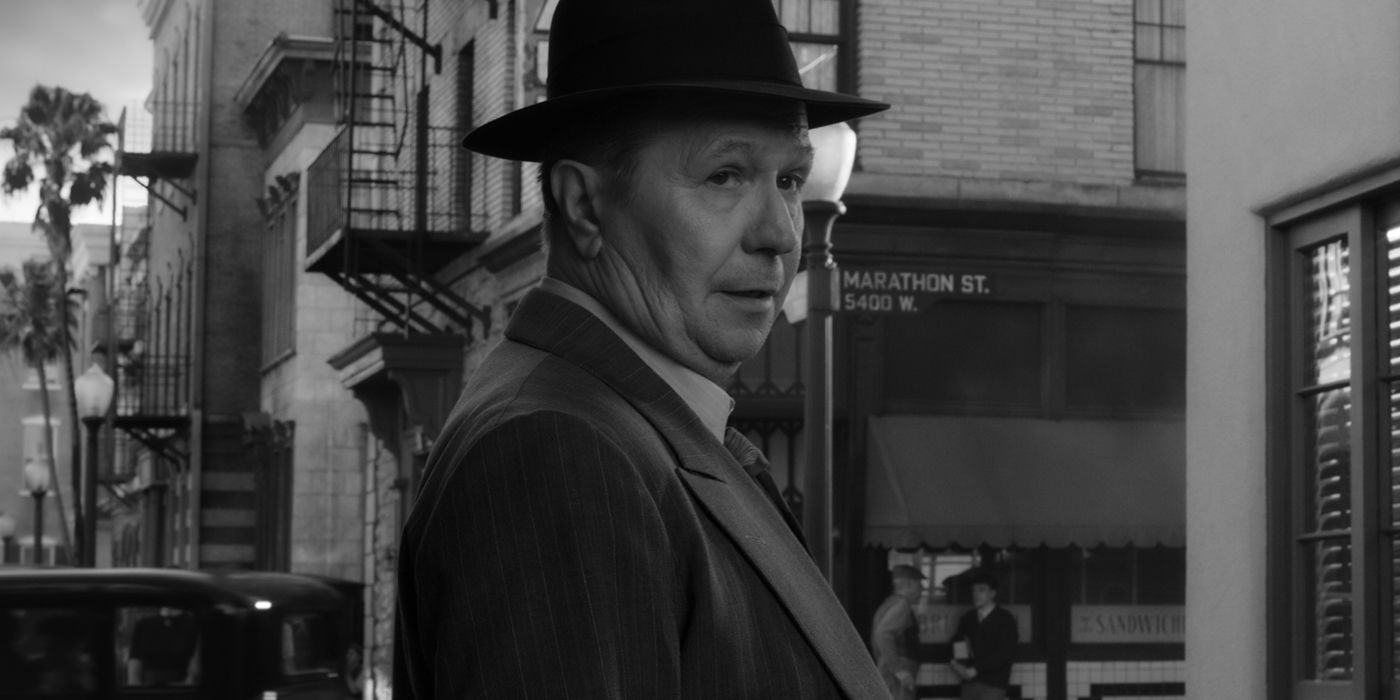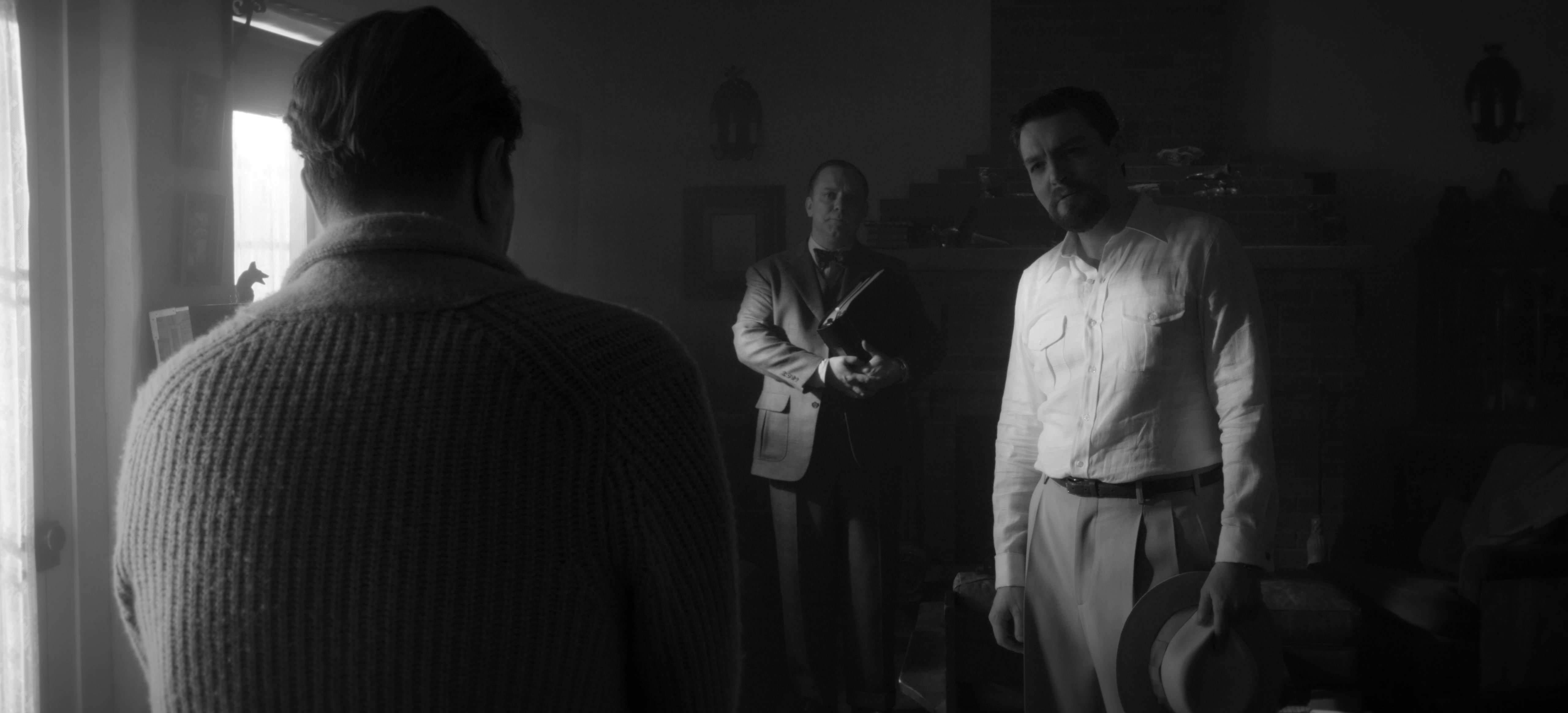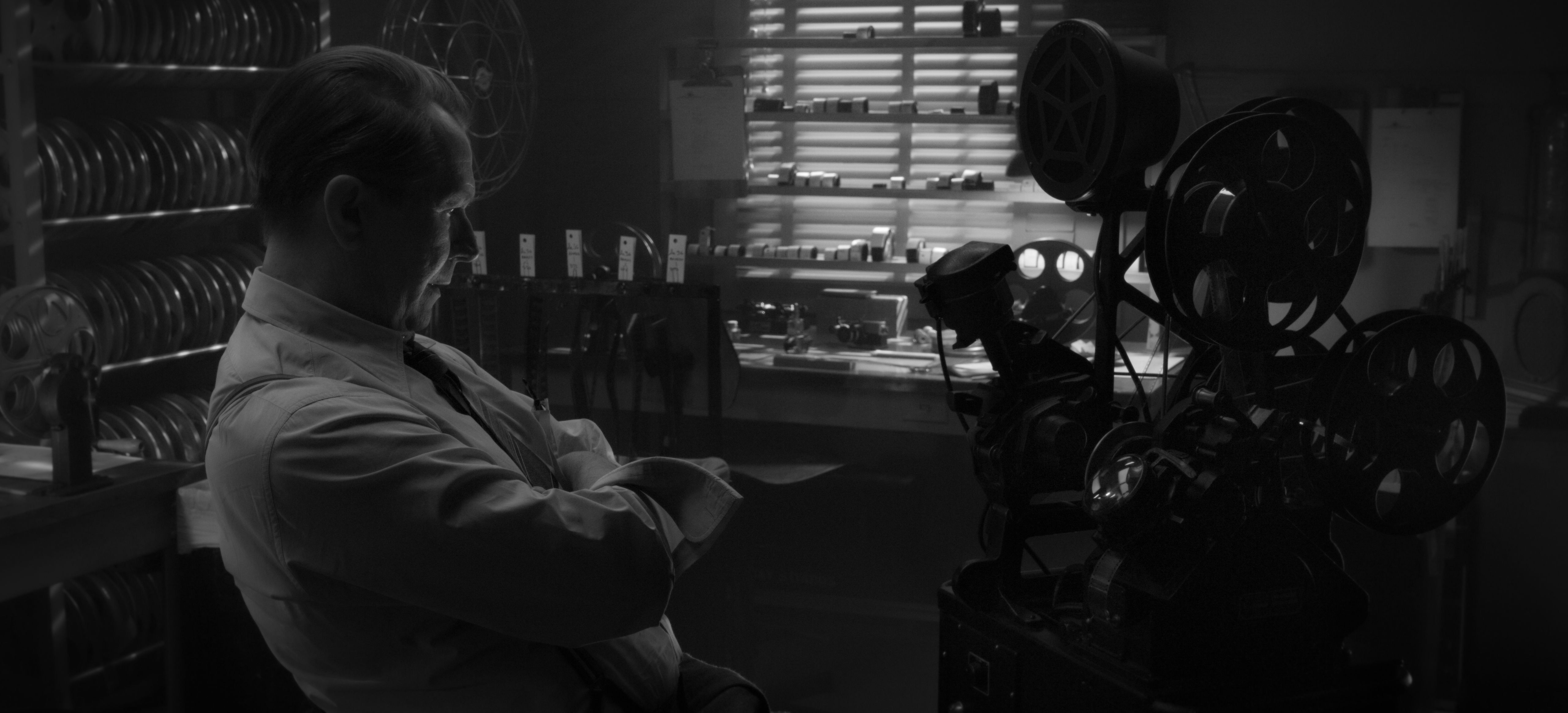[Editor’s note: The following article discusses specific story points from the entirety of the film Mank. If you haven’t seen it, turn back now.]
When it was first announced that David Fincher was making a film about screenwriter Herman J. Mankiewicz and his work on Citizen Kane, most expected the movie to dig into the battle for credit that ensued between Mank and Kane co-writer/producer/director/star Orson Welles. But as it turns out, Mank is more interested in the inspiration for Citizen Kane and what drove Mank to go after William Randolph Hearst than it is in the actual making of Citizen Kane. And since the film Mank ends with Mank and Welles jabbing one another in public, if you’re not familiar with the story of what happened after Mank delivered his first draft, you may leave the film feeling a little bit confused. So let’s dig into what happened between Herman Mankiewicz and Orson Welles while making Citizen Kane.
To recap, by the end of Fincher’s film, Mank (played by Gary Oldman) has completed his first draft of the script for Citizen Kane and Welles comes to his secluded room in Victorville to discuss it. When Mank first took the job, he agreed he would not be receiving credit and that he’d be writing a first draft that would then be rewritten by Welles. This wasn’t unfamiliar to Mank, as he made a living in Hollywood doing uncredited script work on dozens of major movies. But as Mank shows, the beleaguered writer suffered a downturn in his career throughout the 1930s, and upon realizing that Citizen Kane might just be the best thing he’s ever written, decided he wanted to be credited for his work. This does not sit well with Welles, and the two have a blowout.
The film ends by flashing forward to the Academy Awards ceremony, during which Citizen Kane wins its only Oscar for Best Original Screenplay. “Mank, you can kiss my half,” said Welles from Rio De Janeiro when he was asked about the win and if he had a message for Mank. Herman, on the other hand, was more verbose in his acceptance speech:
“You ask me what my acceptance speech might have been. Well here goes. I am very happy to accept this award in the manner in which the screenplay was written. Which is to say, in the absence of Orson Welles.”
After the initial draft of the script was written, Mank and Welles would continue to rewrite and adjust the story. According to Welles, Mank’s draft was too harsh on Kane/Hearst, whereas Welles claimed to have empathy for his titular character.
Deciding he actually does want formal credit, Mank would lodge a formal protest with the Screen Writers Guild, only to withdraw it and then submit it again. And in January 1941, RKO Pictures – which produced Citizen Kane – awarded Mankiewicz screenplay credit alongside Welles. To the public, the two contributed equally to this astonishing filmmaking achievement. But in Hollywood, rumors swirled over the tensions between the two, and who did the bulk of the legwork.
The big question over who actually authored Citizen Kane was most notably posed in film critic Pauline Kael’s essay “Raising Kane,” which was published in 1971. That essay claimed that Mank was the primary author of Citizen Kane and minimized Welles’ role in shaping the screenplay. It would eventually be revealed that Kael’s primary source for the essay was John Houseman, who kept watch over Mank as he was writing the original draft of Kane in Victorville, and whom Welles would come to suspect had turned Mank against him.
Kael’s essay wasn’t received fondly by all, as filmmaker and Welles’ friend Peter Bogdonavich wrote his own rebuttal titled “The Kane Mutiny.” And then in 1978, Robert L. Carringer published an essay called “The Scripts of Citizen Kane” in which he examined all the existing drafts of the Citizen Kane screenplay and attempted to put the debate to rest once and for all. In poring over the various drafts, Carringer concluded that Welles had contributed substantially – but not solely – to the screenplay for Citizen Kane, including the characters, story, and depiction of Kane as it relates to Hearst.
Which honestly is kind of where Mank ends. Yes, we just watched Mank bang out this massive first draft of what would become Citizen Kane, but a first draft is not a finished film. And even if Welles hadn’t contributed significantly to the origination of Citizen Kane, would the movie stand as one of the best films ever made had he not directed it? A script is a script, and Mank’s narrative flourishes were certainly ambitious, but the visual style of Kane is also part of what made it so groundbreaking.
Filmmaking is a collaborative medium, is what Mank underlines — which is kind of funny considering Fincher is hailed by many as an auteur filmmaker. Some may make more substantial contributions than others, but when it comes to the finished film, some strange alchemy occurs owing to the collaboration between writer and director, not to mention the contributions of the cinematographer, the production designer, the costume designer, the performers, the editor, etc.
So who’s the author of Citizen Kane? All of the above. But what Mank illuminates is what personally drove one of its architects, and how his specific life experiences later manifested in the collaborative finished film.
And that is the magic of the movies.




